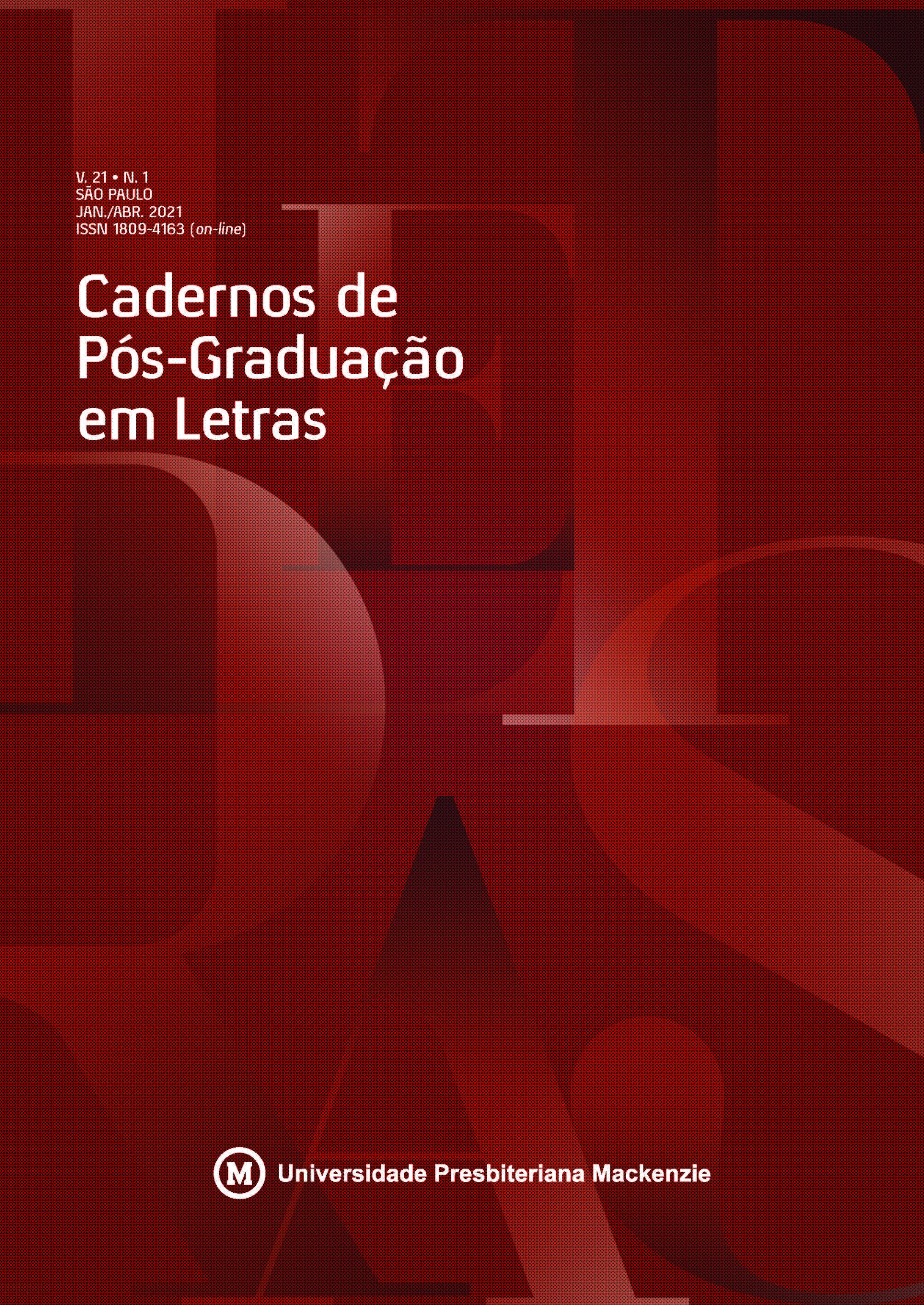Nem mocho, nem cotovia
Keywords:
Tale; Fantastic; XIX Century;Abstract
In this article we propose to go through Calvino's (2004) statement when he organized the selection Fantastic Tales from the 19th Century, presenting Guy de Maupassant's tale The Night as: "An example of Fantastic obtained with minimal resources". Todorov (2017) and Ceserani (2006) studies help us understand the architecture of Maupassant's text, revealing how the theoretical characteristics appear, in this case, diluted in the literary text.
Downloads
References
CALVINO, I. Por que ler os clássicos? Tradução de Nilson Moulin. São Paulo: Companhia das Letras, 1993.
CALVINO, I (org.). Contos fantásticos do século XIX. São Paulo: Companhia das letras, 2004.
CANDIDO, Antonio. A literatura e vida social. In: Literatura e sociedade. 4. Ed. São Paulo: Nacional, 2000.
CESERANI, Remo. O Fantástico. Tradução: Nilton Cezar Tridapolli. Curitiba: Ed. UFPR, 2006.
LINS, Osman. Lima Barreto e o espaço romanesco. São Paulo: Ática, 1976.
MAUPASSANT, Guy de. A noite. Tradução: Rosa Freire D'Aguiar. In: CALVINO, I (org.). Contos fantásticos do século XIX. São Paulo: Companhia das letras, 2004.
TODOROV, T. Introdução à literatura fantástica. Tradução: Maria Clara Correa Castello. São Paulo: Perspectiva, 2017.
Downloads
Published
How to Cite
Issue
Section
License
The copyright of the articles published in Cadernos de Pós-Graduação em Letras belongs to the authors, who grant the Mackenzie Presbyterian University the exclusive rights to publish the content. Total or partial reproduction is prohibited without due authorization from the Editorial Committee, except for study and research.











